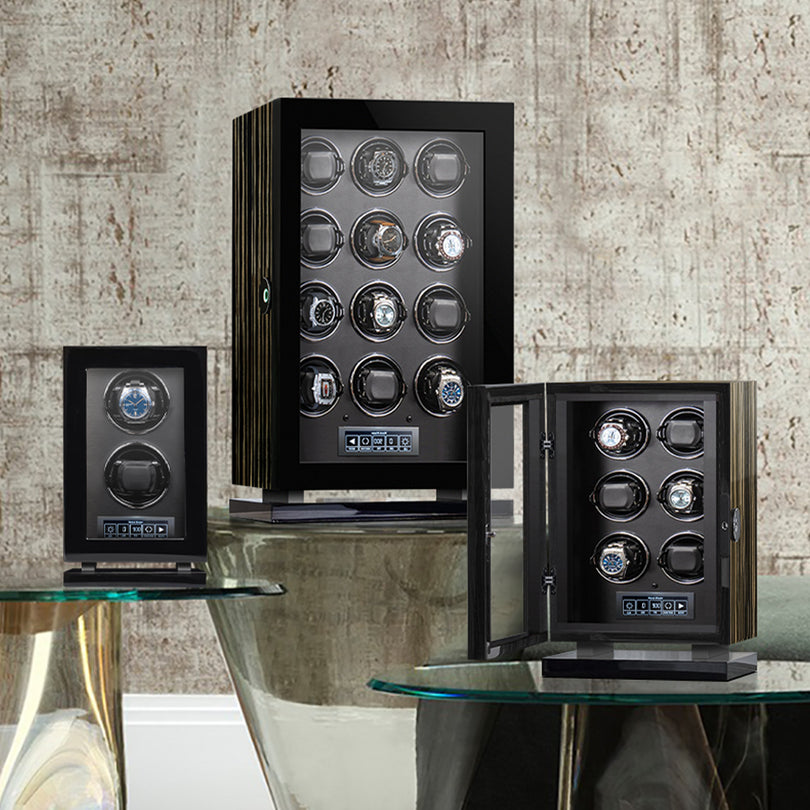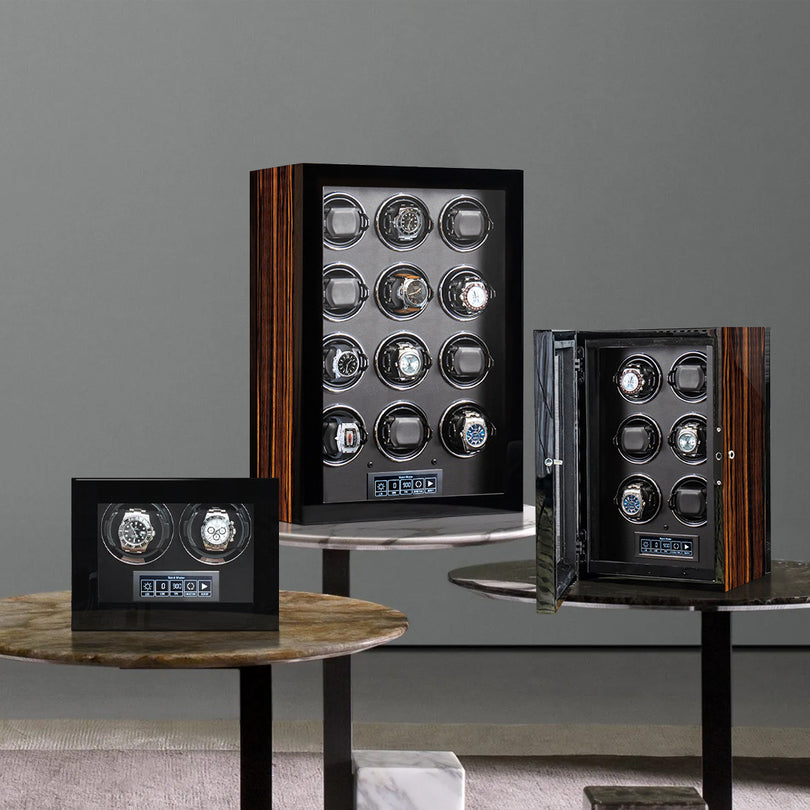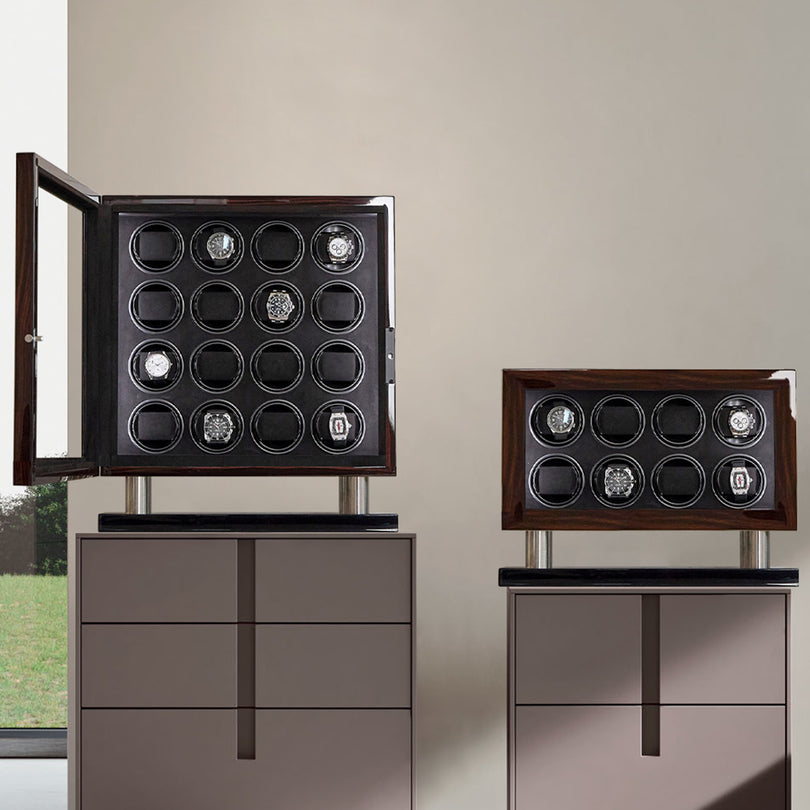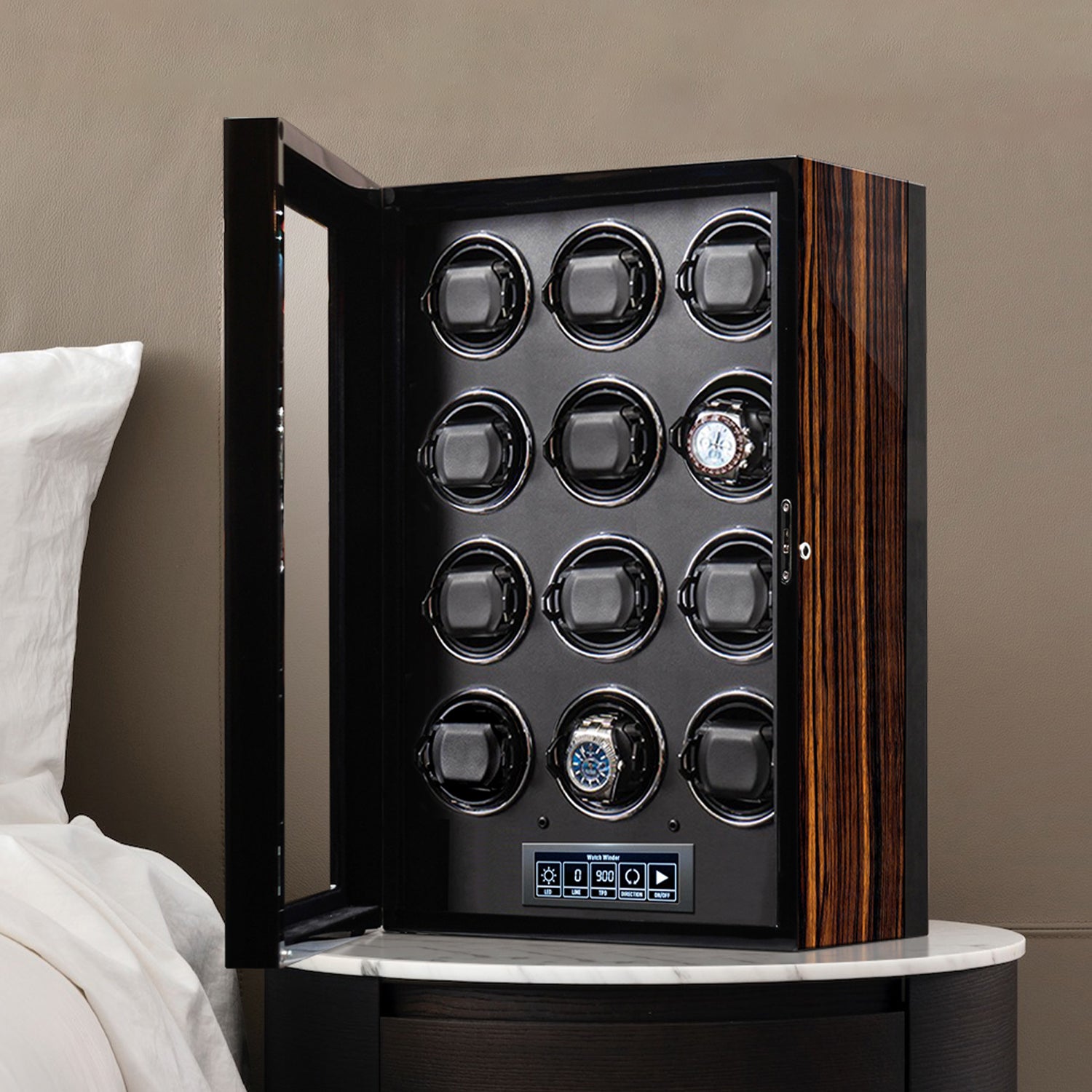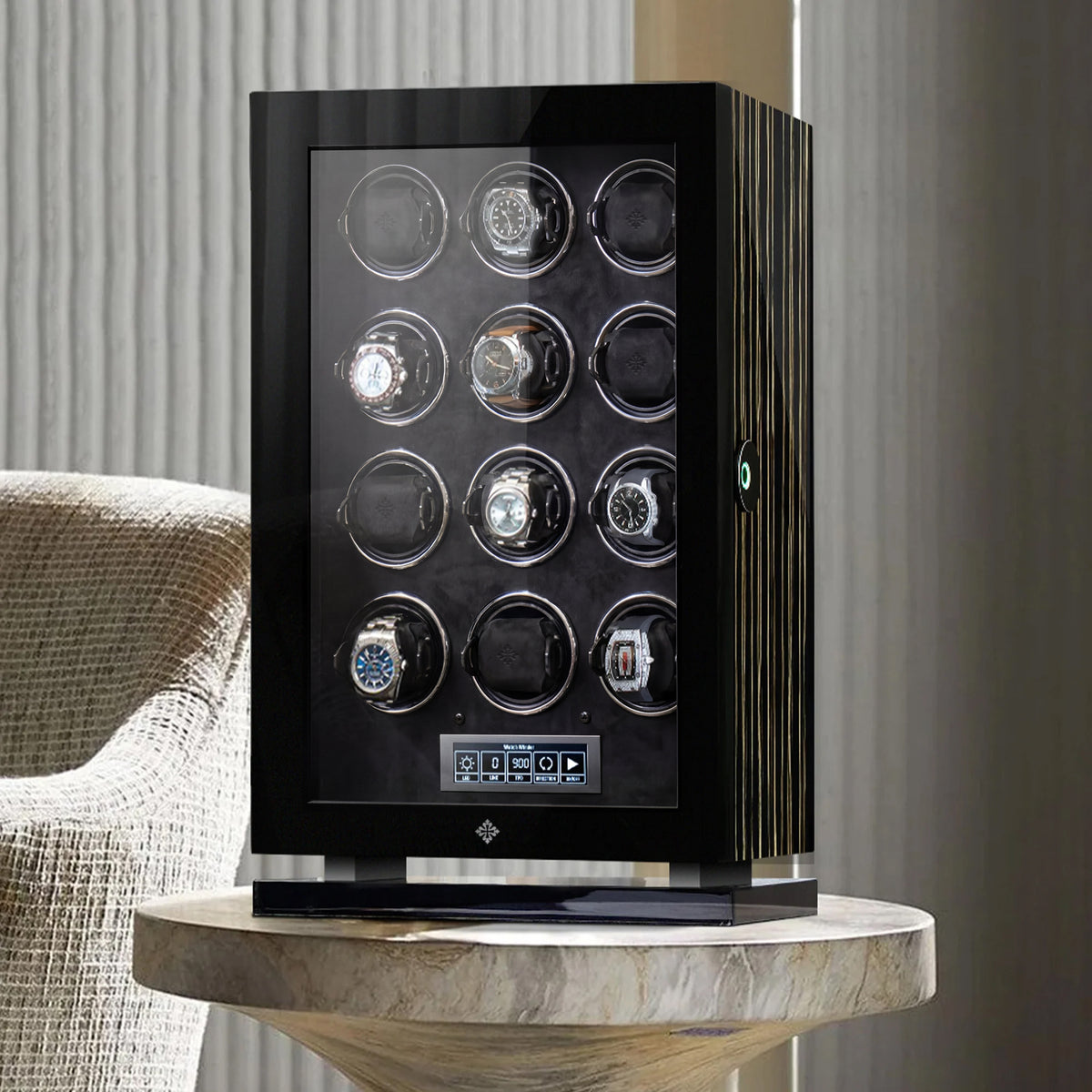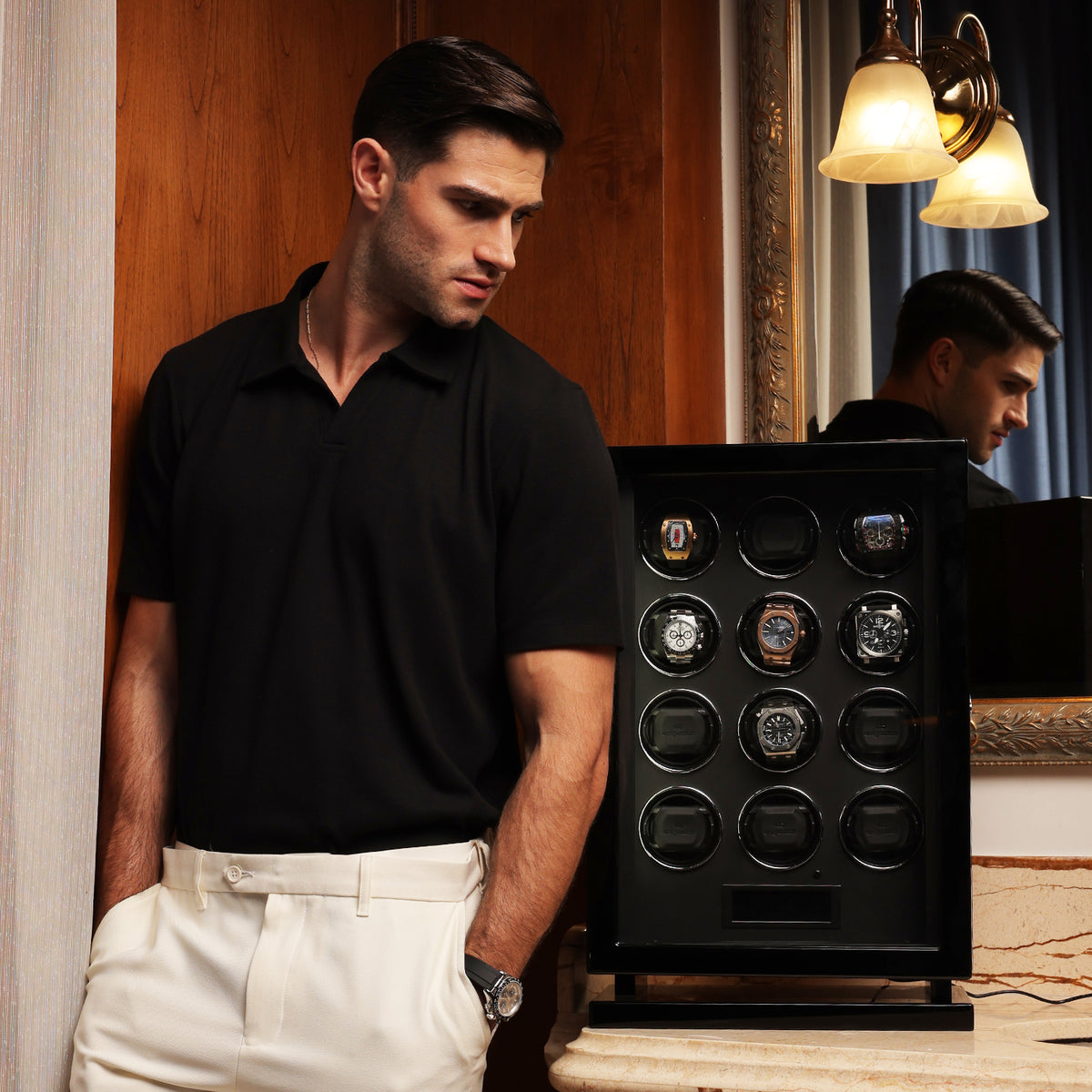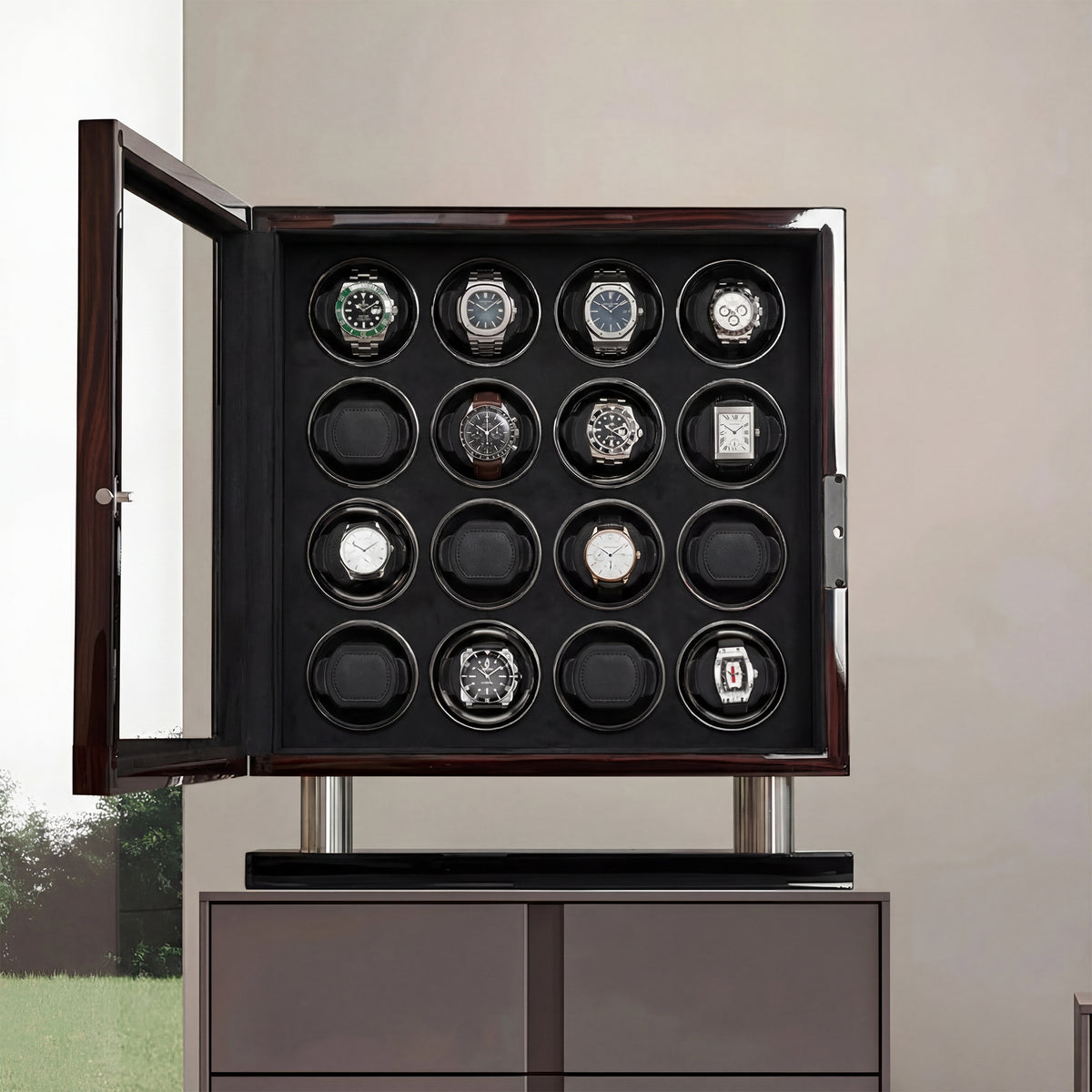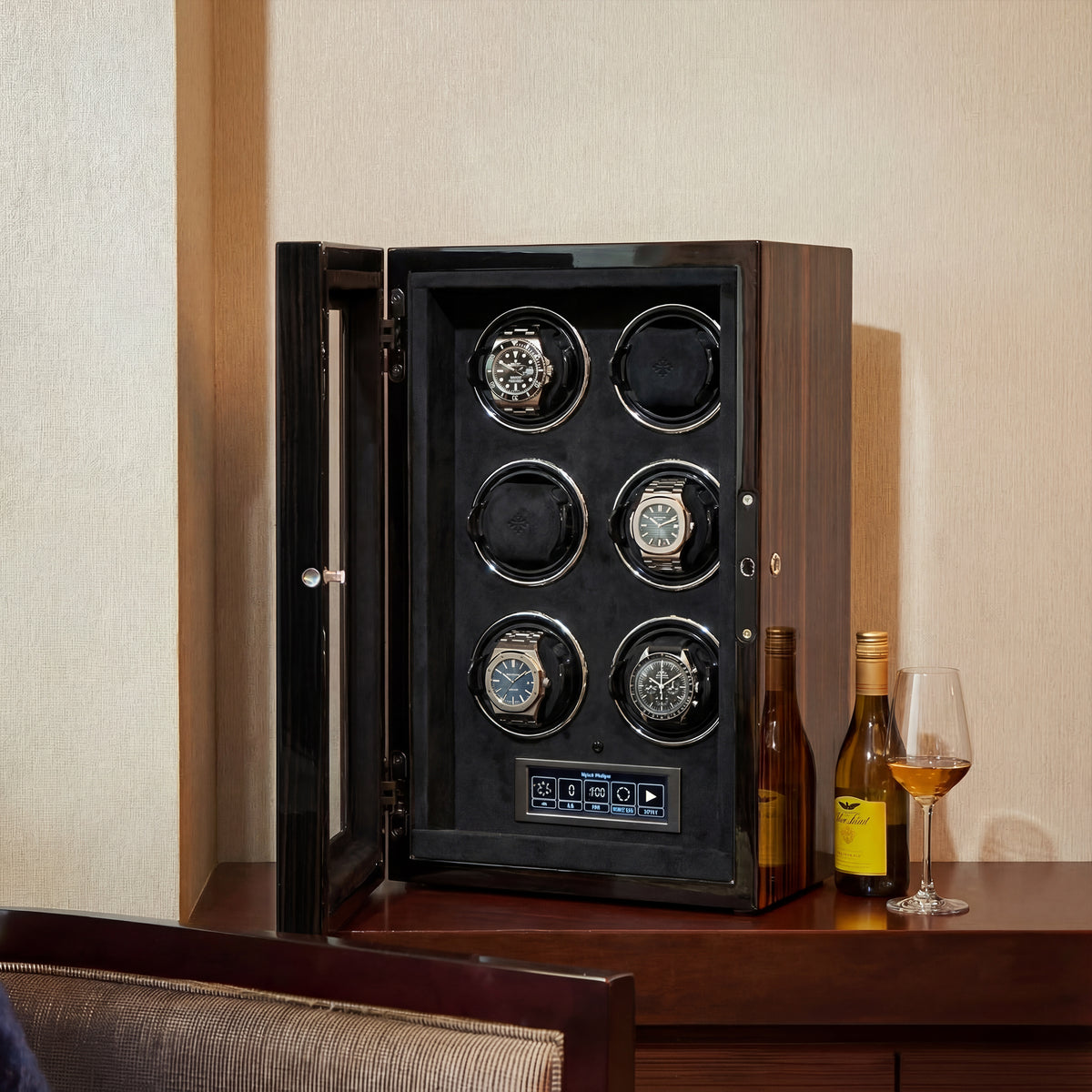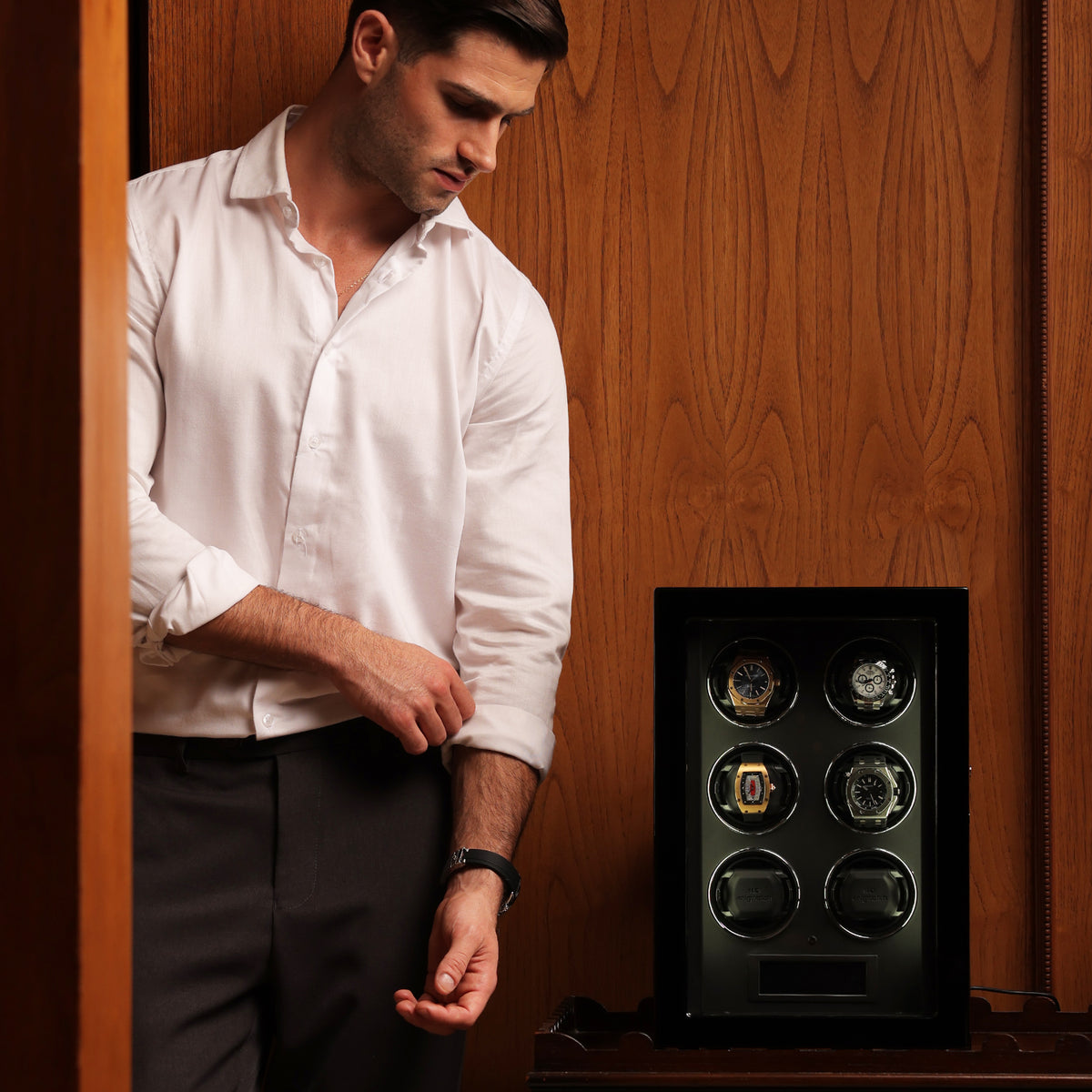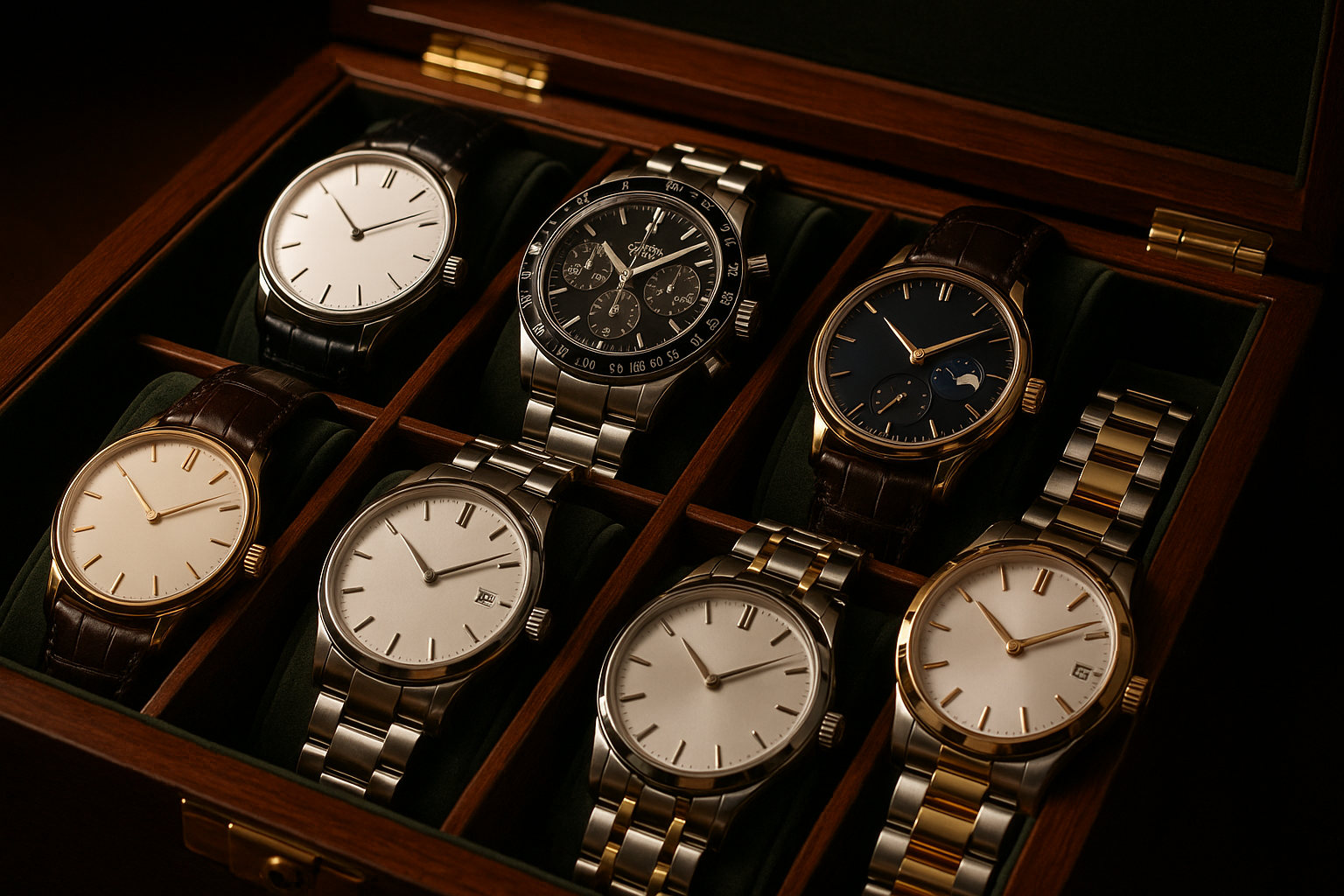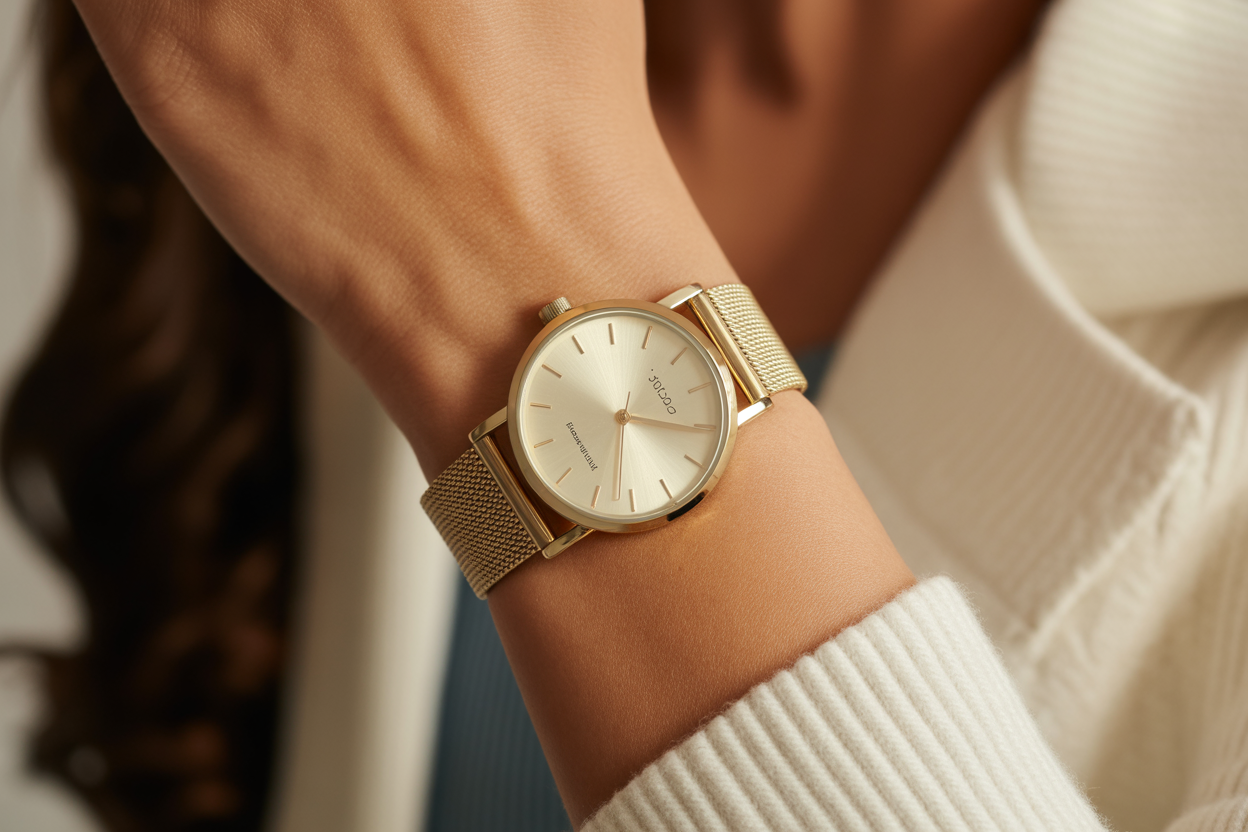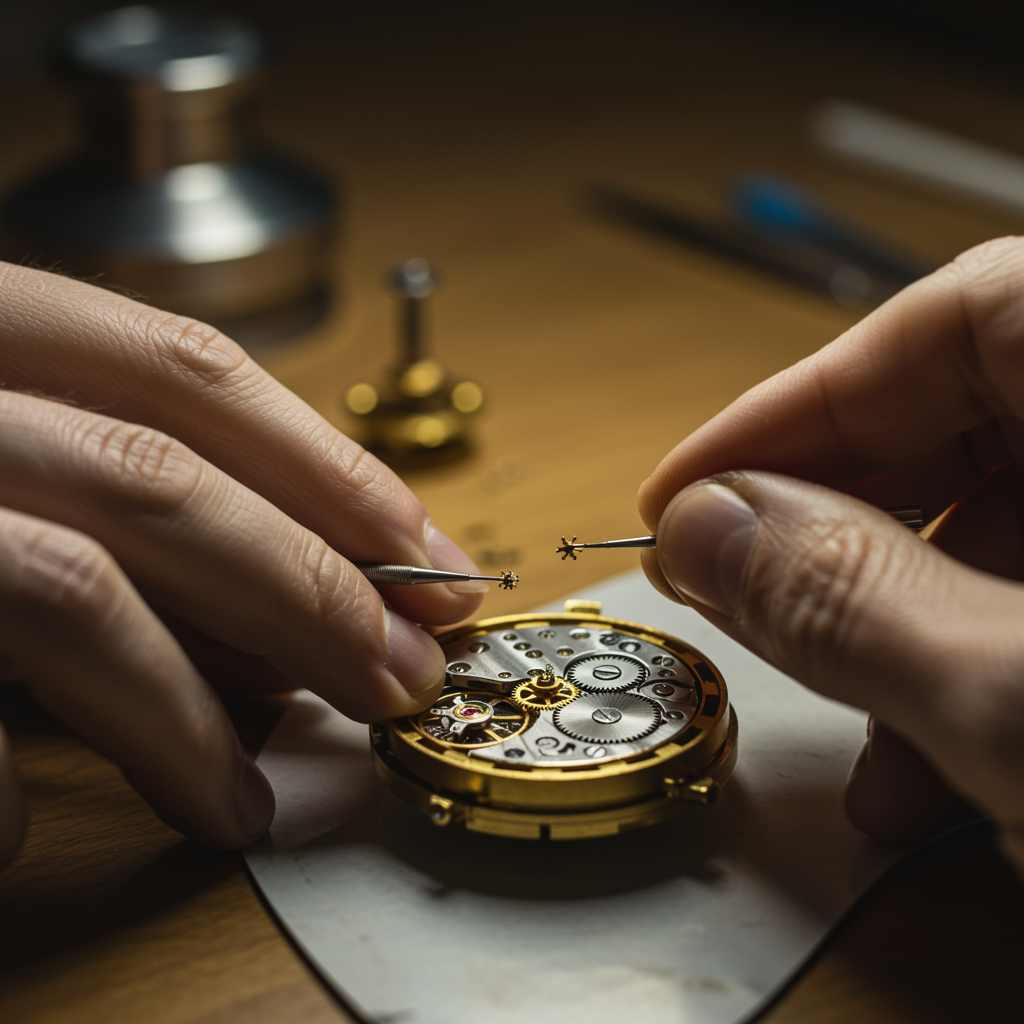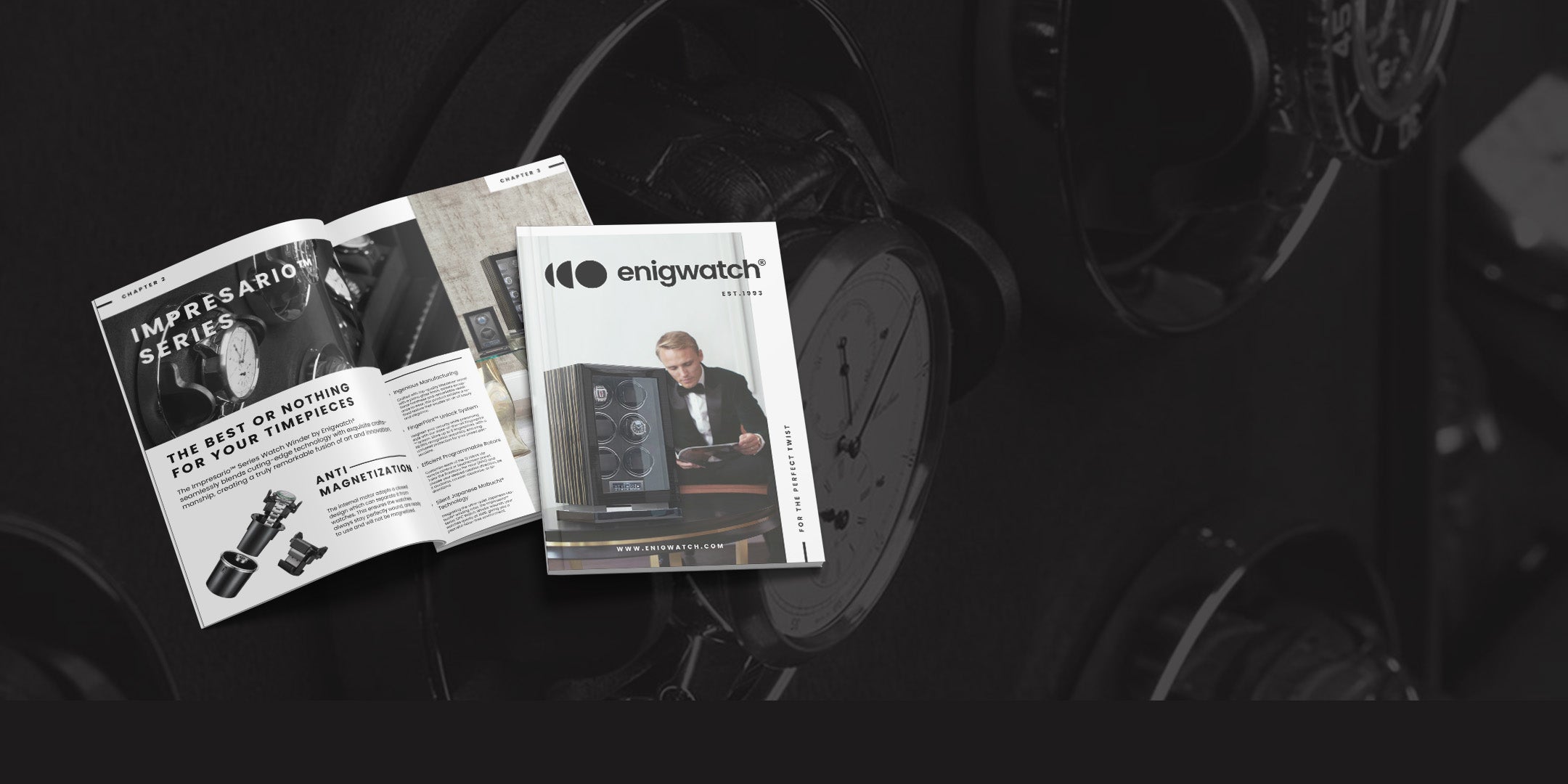Ah, the world of automatic watches, where precision is vital. Watch Winder TPD (Turns Per Day) is more than just a mere feature; it's the lifeline that keeps your timepieces ticking flawlessly. This guide unveils the secrets of TPD, ensuring your automatic watches are always ready and accurate.
Read more: Why Do You Need a Watch Winder? This Is The Answer
TPD Explained: Your Watch's Best Friend

What Exactly is TPD?
Turns Per Day, or TPD, is the number of rotations a watch winder completes in a day to keep an automatic watch fully wound. This concept is vital because each watch has a specific TPD requirement that ensures its internal mechanism remains active and accurate.
Why TPD Matters
TPD is crucial for maintaining the precision of automatic watches. A watch winder with the correct TPD setting mimics the natural movement of the wrist, keeping the watch's internal mechanism engaged and preventing the oils inside from coagulating, which can affect accuracy and longevity.
Read more: Discovering How Automatic Watch Work and How to Maintain It
Tailoring TPD to Your Timepiece

Finding Your Watch's Ideal TPD
Understanding the Turns Per Day (TPD) requirement of your watch is crucial for its longevity and accuracy. Each watch, depending on its make and model, has a specific TPD requirement that ensures it remains fully wound without being overworked. Here's how you can find the ideal TPD for your timepiece:
- Consult the Manufacturer’s Specifications: The best starting point is to check the user manual or the manufacturer's website. Most watch brands provide detailed information about the optimal TPD settings for their models.
- Research Online Resources: There are numerous online databases and forums where watch enthusiasts and experts discuss and share TPD information. Websites like WatchBase or forums on WatchUSeek can be invaluable resources.
- Understand Your Watch’s Movement: The type of movement in your watch plays a significant role in determining its TPD. For instance, watches with a simple time-only movement may require fewer turns compared to complex chronographs or perpetual calendars.
- Experiment with Settings: If information is not readily available, you may need to experiment. Start with a lower TPD setting and gradually increase until you find the point where your watch keeps accurate time without losing power overnight.
- Consider Professional Advice: For vintage or highly complex watches, consulting a professional watchmaker can be the best approach. They can provide insights specific to your watch’s mechanism.
- Use a Programmable Watch Winder: If you own multiple watches with different TPD requirements, investing in a programmable watch winder can be a wise decision. These winders allow you to set different TPDs for each watch, catering to their individual needs.
The Impact of TPD on Watch Health
The Turns Per Day (TPD) setting on a watch winder is more than just a technical specification; it's a critical factor in maintaining the health and longevity of your automatic watch. Striking the right balance in TPD settings is essential to ensure your watch operates optimally without incurring damage over time. Here's a closer look at the impact of TPD on your watch's health:
- Risk of Under-Winding: Setting the TPD too low can lead to under-winding. In this scenario, your watch may not receive enough energy to keep running, leading to inaccurate timekeeping. Regularly under-wound watches can also suffer from insufficient lubrication as the movement isn't fully activated, potentially causing wear and tear on the gears and springs.
- Dangers of Over-Winding: On the other end of the spectrum, setting the TPD too high can lead to over-winding. While modern automatic watches are designed to prevent damage from over-winding, excessively high TPD settings can cause unnecessary strain on the movement. This can lead to accelerated wear of components and potentially reduce the lifespan of the watch.
- Optimal Energy Levels: The ideal TPD setting ensures that your watch maintains its power reserve without overexertion. This is particularly important for watches with complications like moon phases, calendars, or chronographs, as these features require consistent power to function accurately.
- Preserving Watch Mechanics: Correct TPD settings help in maintaining the intricate mechanics of your watch. It ensures that the lubricants within the watch movement are evenly distributed, reducing friction and preventing wear on the moving parts.
- Customization for Each Watch: It's important to remember that each watch may have a different ideal TPD setting. Watches with different calibers, ages, and wear levels will have varying requirements. Therefore, understanding and customizing the TPD setting for each watch is crucial for its individual health.
- Long-Term Preservation: By maintaining the correct TPD, you're not just ensuring the daily performance of your watch but also its long-term preservation. A well-maintained watch can last generations, retaining its value and functionality.
Read more: 7 Best Watches Under 250 Dollars : The Beauty of Affordable Timepieces
Discovering the Elite: Our Top Choice for Watch Winder TPD
In the quest for the ultimate watch winder TPD, Enigwatch stands out with its curated selection, blending innovation with elegance. Our top picks are more than just functional accessories; they are the guardians of your timepieces, ensuring precision and care. Dive into our exclusive selection and find the perfect companion for your cherished watches.
Virtuoso™ 6 Watch Winder: A Symphony of Precision

The Virtuoso™ 6 Watch Winder is not just a winder; it's a testament to the art of horology. With its optimal TPD settings, it ensures your watches are not just wound but are kept in their prime condition. This winder is a perfect blend of technology and aesthetics, making it an ideal choice for those who value precision and style. Click to experience the harmony of functionality and design, and elevate your watch collection with the Virtuoso™ 6.
Impresario™ Series 12 Watch Winder: Mastering the Art of TPD
Embrace the epitome of luxury and efficiency with the Impresario™ Series 12 Watch Winder. Tailored for the aficionado, this winder excels in delivering the precise TPD needed for high-end timepieces. Its sophisticated design and state-of-the-art mechanics make it a must-have for serious collectors. Discover how the Impresario™ Series 12 can transform your watch winding experience and add it to your collection today.
Conclusion: Embracing TPD for Timeless Watch Care
Understanding and utilizing the correct TPD settings in your watch winder is essential for the care and longevity of your automatic watches. This knowledge not only enhances the life of your timepieces but also ensures they perform with utmost accuracy, ready to be worn at a moment's notice.

